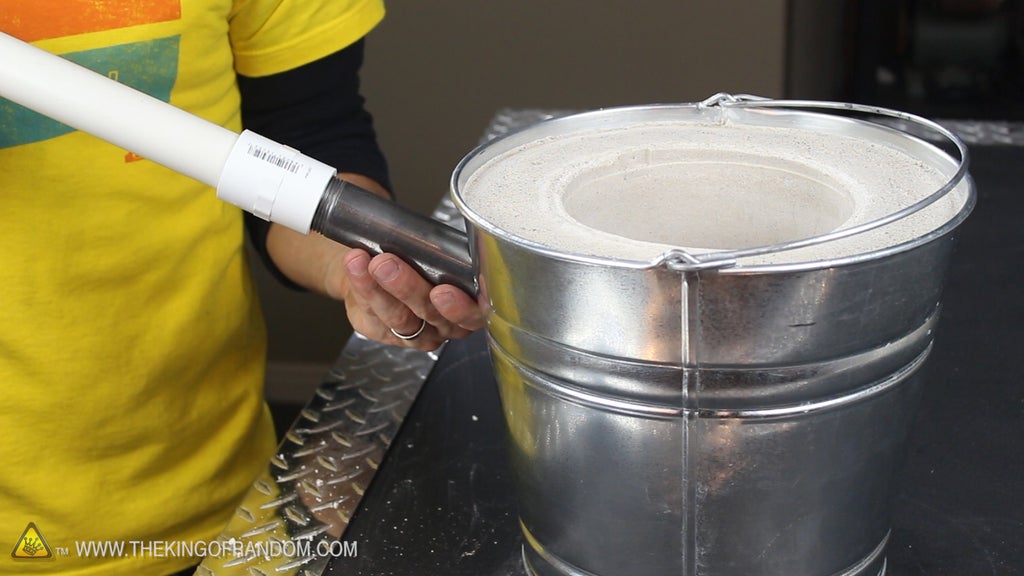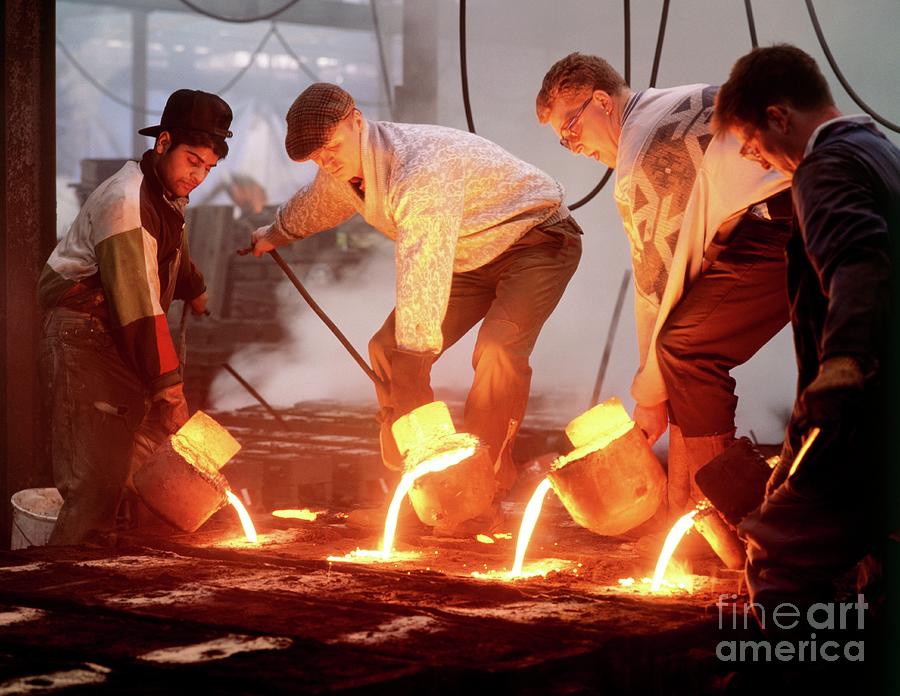Discover the Cutting-edge Methods Used in a Metal Foundry for Superior Casting Outcomes
In today's affordable production landscape, metal foundries are increasingly adopting innovative methods to boost spreading results - Aluminum Foundry. Advanced computer system simulations enable for precise modeling of liquified metal habits, while 3D printing enables quick production of complex molds. Additionally, environmentally friendly products and automation improve procedures. These developments guarantee substantial renovations in effectiveness and quality assurance. Nonetheless, the impact of these innovations on sustainability and manufacturing practices stays to be totally explored
Advanced Computer Simulations in Metal Casting
Advanced computer system simulations have changed the metal spreading process by enhancing accuracy and performance. These sophisticated tools permit designers to develop online designs of actors parts, allowing them to forecast the habits and examine of molten metal during the spreading stage. By simulating numerous parameters such as temperature level, circulation rate, and cooling prices, producers can recognize potential problems prior to physical manufacturing starts.
This positive technique decreases waste and minimizes pricey errors, ultimately bring about enhanced item top quality. In addition, simulations promote the optimization of mold designs, ensuring that they fulfill the particular requirements of each task. The assimilation of computational liquid dynamics (CFD) and limited element evaluation (FEA) additional contributes to the accuracy of these simulations, providing understandings that were formerly unattainable. Because of this, progressed computer simulations have actually ended up being an important component of modern metal foundries, greatly progressing the industry's abilities.
3D Printing for Mold And Mildews and Patterns
3D printing has emerged as a groundbreaking method for creating mold and mildews and patterns in the metal foundry sector. This innovation enables the fast manufacturing of complex geometries that standard production methods battle to achieve. By making use of additive production, foundries can create complex layouts with reduced lead times and material waste. The capability to generate molds on demand enables for better flexibility in style versions, facilitating faster prototyping and adjustments.
Moreover, 3D printing can make use of a variety of products, consisting of plastics and steels, tailored to particular casting needs. This versatility boosts the accuracy of mold and mildews, causing exceptional casting outcomes with enhanced surface area coatings. In addition, the decrease in the variety of parts called for streamlines setting up processes, additionally optimizing manufacturing performance. As foundries proceed to embrace 3D printing, they are poised to redefine sector requirements, leading the way for development and boosted efficiency in metal casting procedures.
Eco-Friendly Products and Processes
As the metal foundry industry faces enhancing pressure to reduce its ecological impact, the fostering of eco-friendly products and procedures has become vital. Foundries are now exploring lasting choices to conventional products, such as utilizing bio-based binders and recycled metals. These materials not just lessen waste but also reduced power usage during manufacturing.
Furthermore, improvements in sand casting techniques have actually caused using artificial sands that are less hazardous to the setting. Foundries are likewise executing cutting-edge processes like liquified metal therapy that lowers discharges and improves the high quality of actors products.
Water-based coverings have actually replaced hazardous solvents, advertising a much safer work atmosphere. By incorporating these environment-friendly practices, metal foundries can substantially decrease their environmental influence while keeping premium casting outcomes. This change not only profits the environment yet likewise aligns with the expanding customer demand for sustainable production solutions
Automation and Robotics in Foundry Workflow
While the metal foundry sector welcomes technology, the combination of automation and robotics is transforming operations greatly. Automated systems improve procedures such as mold and mildew making, metal putting, and casting finishing, significantly enhancing effectiveness. Robotics look at this web-site promote the handling of hefty products, lowering the risk of office injuries and making sure safer settings.

Further, using automated assisted automobiles (AGVs) enhances product transportation within facilities, guaranteeing prompt delivery of components to appropriate workstations. By carrying out these technologies, foundries can adjust to varying demands with greater dexterity, inevitably additional hints resulting in improved profitability and competition in the market. As automation and robotics proceed to develop, they hold the possible to redefine typical foundry practices and drive additional improvements in casting strategies.
Real-Time Monitoring and Quality Assurance Techniques
The developments in automation and robotics have actually led the way for extra advanced approaches to quality control in metal foundries. Real-time surveillance systems make use of advanced sensors and data analytics to track important parameters throughout the casting process. These systems constantly assess variables such as product, pressure, and temperature level structure, allowing instant detection of inconsistencies from established requirements.
Quality assurance techniques now include machine discovering formulas that examine historic data to predict possible problems before they take place. This positive technique decreases waste and boosts total production performance. Additionally, integrated feedback loops allow for quick adjustments, ensuring that each spreading fulfills rigorous top quality demands.
The execution of electronic twins-- online reproductions of physical properties-- has likewise transformed quality guarantee, permitting designers to simulate and enhance procedures in real-time. With each other, these ingenious strategies significantly improve the reliability and quality of castings, setting new industry criteria in metal foundry procedures.
Regularly Asked Inquiries
What Sorts of Metals Are Frequently Cast in Shops?
Generally cast steels in foundries include light weight aluminum, bronze, iron, and brass. Each metal shows distinct residential or commercial properties, making them appropriate for various applications, such as automobile parts, equipment, and artistic sculptures, boosting their versatility in manufacturing.

The length of time Does the Casting Process Typically Take?
The spreading process commonly takes a number of hours to days, depending upon elements such as the intricacy of the mold, sort of metal utilized, and air conditioning needs. Each stage affects the total duration noticeably.
What Precaution Remain In Area for Foundry Employees?

Just how Are Defects in Castings Identified and Addressed?
Defects in castings are identified via visual evaluations and non-destructive screening methods. As soon as spotted, foundry Resources employees address them by refining procedures, adjusting material compositions, and applying restorative measures to ensure quality and compliance with requirements.
What Is the Price Variety for Metal Casting Solutions?
The expense array for metal spreading solutions normally differs in between $1 to $10 per pound, depending upon elements such as product type, complexity of the design, and manufacturing volume, impacting general rates considerably.
In today's affordable manufacturing landscape, metal foundries are significantly taking on cutting-edge strategies to boost spreading results. As the metal foundry market faces increasing pressure to minimize its environmental footprint, the fostering of environment-friendly products and procedures has come to be crucial. Shops are currently exploring lasting alternatives to standard materials, such as making use of recycled steels and bio-based binders. By incorporating these environmentally friendly practices, metal foundries can considerably reduce their environmental impact while preserving top notch casting results. The innovations in automation and robotics have actually led the method for much more sophisticated methods to top quality guarantee in metal foundries.